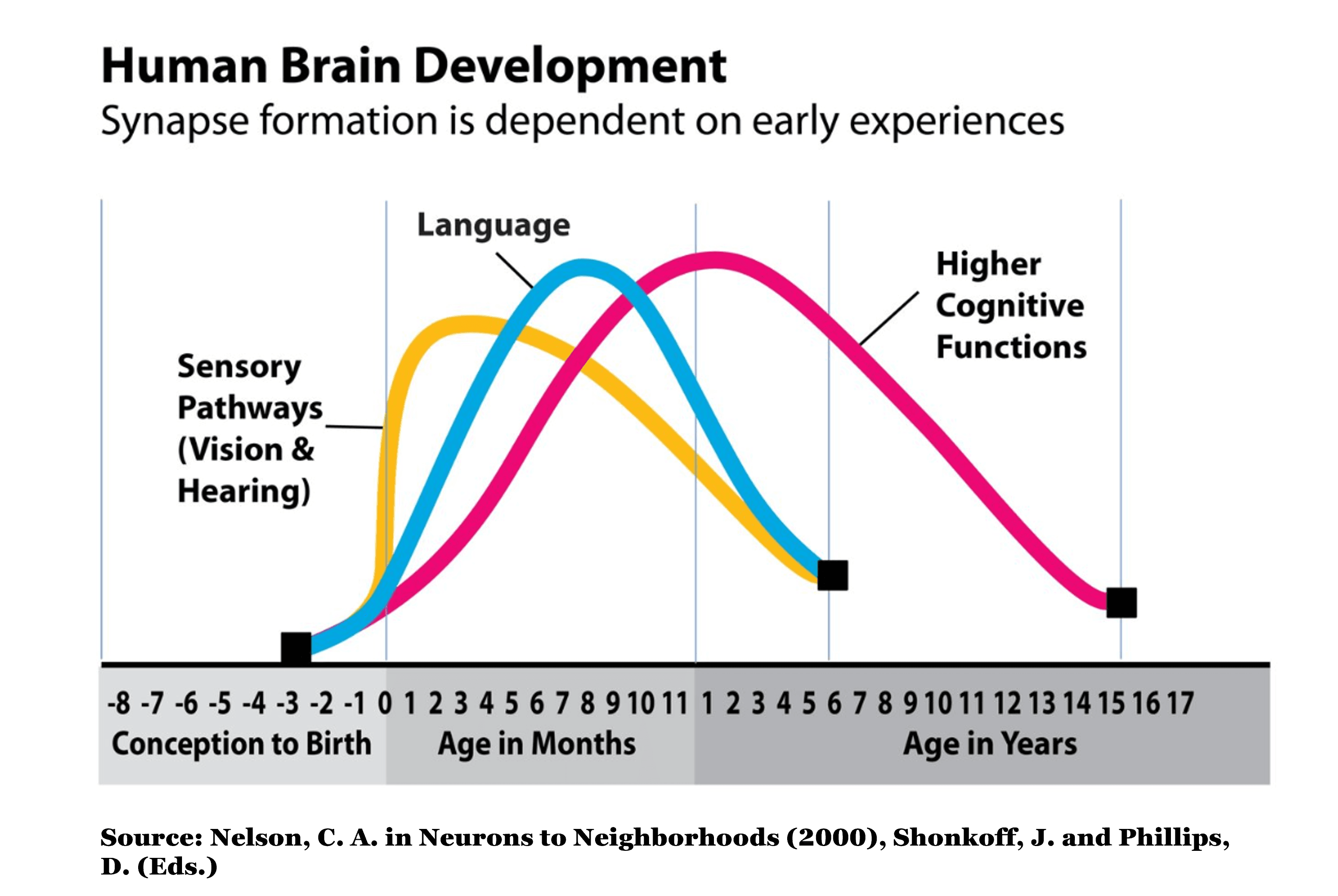A child's readiness to learn and thrive when entering kindergarten profoundly influences his or her prospects for success in school and life. While the benefits of preschool participation for four-year-olds is debated, we cannot afford to wait until children are about to enter kindergarten to prepare them to thrive in the K-12 system. Evidence concerning development and skills formation confirms that the first three years are a critical and unique opportunity to set children--especially those facing situational or developmental risk factors--on the path to success in school and beyond.
Early Brain Development

- In the earliest years, the brain forms as many as one million new synaptic connections each second.
- Simple neural connections associated with senses like vision and hearing form first.
- More complex circuitry that supports children's emerging language mastery and a wide range of higher cognitive functions follow.
- During this time, children's neural circuitry is most flexible and receptive to early interactions and environments.
- Consistently stimulating nurturing early experiences creates robust, efficient pathways throughout regions of the brain controlling memory, language, reasoning, impulse control and other competencies.
Early Experiences Shape the Brain's Core Circuitry
Neural Development After Age 3
- Around age 3, the rapid growth of new, highly receptive synapses begins to slow dramatically.
- The brain's genetic blueprint instructs it to prune away excess or under-utilized neural connections so it can operate more efficiently, leaving behind the core wiring that will support all future learning and skills formation.
- Well before children arrive at their first day of kindergarten, it requires increasing amounts of effort to build synaptic pathways that will enable them to absorb new information, master new skills, or change existing habits and behaviors.
- Even though the human brain never ceases to change as we learn and grow, the first three years are a critical and unique opportunity to lay a strong neural foundation to last a lifetime.

It is far easier to help children build healthy neural architecture in the first three years of life than to correct or mitigate problems in that architecture later in the K-12 system and beyond.
Additional Resources
-
Weblink: Center on the Developing Child, Harvard University
-
Website from Center for Disease Control and Prevention
-
Early intervention services for families with children birth to age three with developmental delays and/or health care needs.

